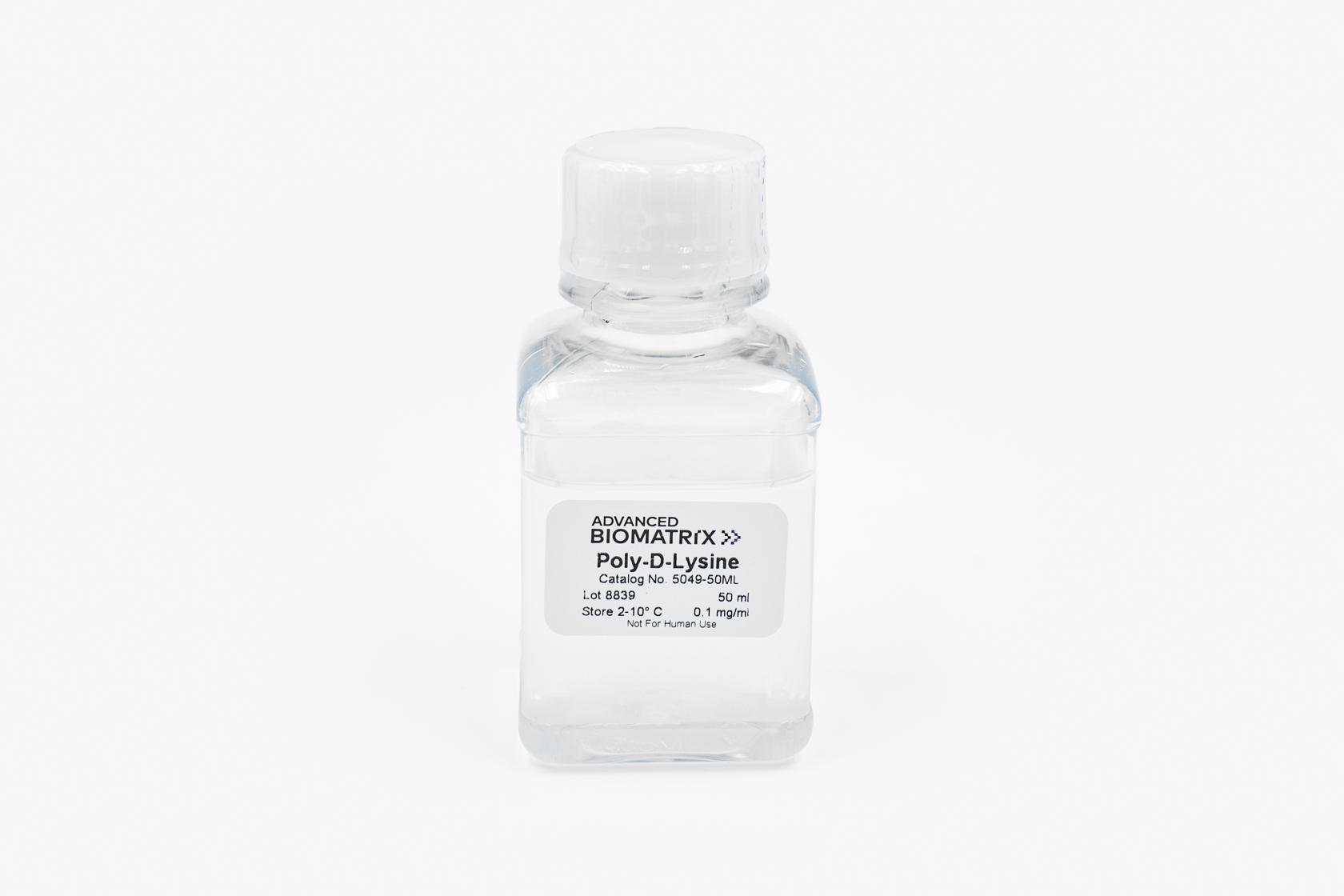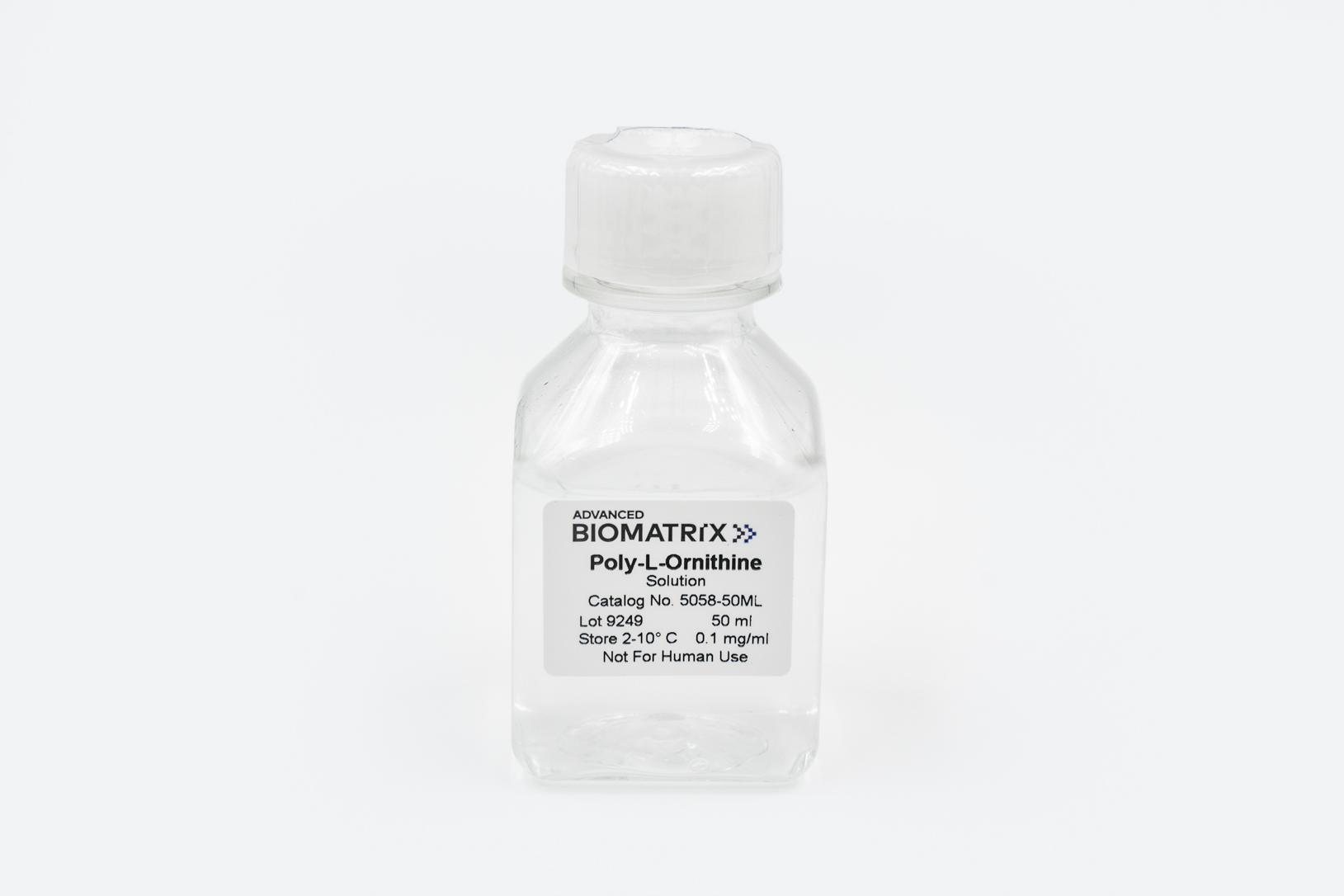-
Collagen
-
Type I - Atelocollagen
- PureCol® Solution, 3 mg/ml (bovine) #5005
- Nutragen® Solution, 6 mg/ml (bovine) #5010
- FibriCol® Solution, 10 mg/ml (bovine) #5133
- PureCol® EZ Gel, Solution, 5 mg/ml (bovine) #5074
- PureCol® Lyophilized, 15 mg (bovine) #5006
- VitroCol® Solution, 3 mg/ml (human) #5007
- VitroCol® Lyophilized, 15 mg (human) #5008
-
Type I - Telocollagen
- TeloCol®-3 Solution, 3 mg/ml (bovine) #5026
- TeloCol®-6 Solution, 6 mg/ml (bovine) #5225
- TeloCol®-10 Solution, 10 mg/ml (bovine) #5226
- RatCol™ for 2D and 3D, Solution, 4 mg/ml (rat) #5153
- RatCol™ High Concentration, Solution, 10 mg/ml (rat)
- RatCol™ lyophilized, 100 mg (rat)
- RatCol™ for Coatings, Solution, 4 mg/ml (rat) #5056
- Type I - Insoluble Collagen
- Type I - Bioinks
- Type II Collagen
- Type III Collagen
- Type IV Collagen
- Collagen Standard
-
PureCol® Collagen Coated Plates
- Collagen Coated T-25 Flasks #5029
- Collagen Coated 6-well Plates #5073
- Collagen Coated 12-well Plates #5439
- Collagen Coated 24-well Plates #5440
- Collagen Coated 48-well Plates #5181
- Collagen Coated 96-well Plates #5072
- Collagen Coated 384-well Plates #5380-5EA
- Collagen Coated 100 x 20 mm Dishes #5028
- MatTek Glass-Bottom Dishes
- MatTek Multi-Well Plates
- Collagen Scaffolds
- Collagen Hybridizing Peptides
-
Type I - Atelocollagen
- Tunable Stiffness
- CytoSoft™ Rigidity Plates
-
Bioprinting
- Support Slurry for FRESH Bioprinting
-
Bioinks for Extrusion Bioprinting
- Lifeink® 200 Collagen Bioink (35 mg/ml) #5278
- Lifeink® 220 Collagen Bioink (70 mg/ml) #5343
- Lifeink® 240 Acidic Collagen Bioink (35 mg/ml) #5267
- Lifeink® 260 Acidic Collagen Bioink (70 mg/ml) #5358
- GelMA Bioink
- GelMA A Bioink
- GelMA C Bioink
- Pluronic F-127 40% Sterile Solution
- GelMA 20% Sterile Solution
- Alginate 5% Sterile Solution
- Photoinitiators
- Bioinks for BIONOVA X
- Bioinks for Lumen X
- DLP Printing Consumables
-
Create Your Own Bioinks
- PhotoCol® Methacrylated Collagen
- PhotoGel® Methacrylated Gelatin 95% DS
- PhotoGel® Methacrylated Gelatin 50% DS
- PhotoHA®-Stiff Methacrylated Hyaluronic Acid
- PhotoHA®-Soft Methacrylated Hyaluronic Acid
- PhotoAlginate® Methacrylated Alginate
- PhotoDextran® Methacrylated Dextran
- PEGDA (Various Molecular Weights)
- Silk Fibroin, Solution
- PhotoSericin® Methacrylated Sericin
- Bioprinters
-
3D Hydrogels
- Thermoreversible Hydrogel
- Silk Fibroin
-
Type I Collagen for 3D Hydrogels
- PureCol® Solution, 3 mg/ml (bovine) #5005
- Nutragen® Solution, 6 mg/ml (bovine) #5010
- FibriCol® Solution, 10 mg/ml (bovine) #5133
- PureCol® EZ Gel, Solution, 5 mg/ml (bovine) #5074
- VitroCol® Solution, 3 mg/ml (human) #5007
- TeloCol®-3 Solution, 3 mg/ml (bovine) #5026
- TeloCol®-6 Solution, 6 mg/ml (bovine) #5225
- TeloCol®-10 Solution, 10 mg/ml (bovine) #5226
- RatCol® for 3D gels, Solution, 4 mg/ml (rat) #5153
- HyStem® Thiolated Hyaluronic Acid
- Methacrylated Collagen
- Methacrylated Gelatin
- Methacrylated Hyaluronic Acid
- Diacrylates
- Collagen Sponges
- Methacrylated Polysaccharides
- Spheroids and Organoids
- Extracellular Matrices
- HyStem / Hyaluronic Acid
-
Adhesion Peptides / Proteins
-
Recombinant Adhesion Proteins
- CD2, 0.5 mg/ml #5086
- CDH3, 0.5 mg/ml #5124
- CDH13, 0.5 mg/ml #5125
- CD14, 0.5 mg/ml #5089
- CDH18, 0.5 mg/ml #5090
- CD40, 0.5 mg/ml #5093
- CD86, 0.5 mg/ml #5096
- CD164, 0.5 mg/ml #5100
- CD270, 0.5 mg/ml #5127
- CD274, 0.5 mg/ml #5126
- CD276, 0.5 mg/ml #5123
- E-Cadherin (CD324), 0.5 mg/ml #5085
- ICAM2, 0.5 mg/ml #5107
- Adhesion Peptides
- Collagen Hybridizing Peptides
-
Recombinant Adhesion Proteins
- Reagents
- Assays
Poly-L-Lysine Hydrobromide
Powder, Non-Sterile
Catalog #5173
Poly-L-Lysine Hydrobromide
Powder, Non-Sterile
Catalog #5173
Poly-L-Lysine comes with 100 mg of non-sterile powder. Poly-L-Lysine is a synthetic amino acid chain that is positively charged and widely used as a coating to enhance cell attachment and adhesion to both plasticware and glass surfaces. This product’s molecular weight ranges from 70,000 to 150,000 Da.
Product Description
Poly-L-Lysine is a synthetic amino acid chain that is positively charged and widely used as a coating to enhance cell attachment and adhesion to both plasticware and glass surfaces.
The molecular weight of Poly-L-Lysine can vary significantly with lower molecular weight (30,000 Da) being less viscous and higher molecular weight (>150,000 Da) having more binding sites per molecule. This product’s molecular weight ranges from 70,000 to 150,000 Da.
Poly-L-Lysine is supplied in an amber bottle containing 100 mg of Poly-L-Lysine. The product is ready-to-use after proper addition of cell culture water and filter sterilization.
| Parameter, Testing, and Method | Poly-L-Lysine #5173 |
| Form | Powder |
| Package Size | 100 mg |
| Storage Temperature | -20°C |
| Sterilization Method | Non-Sterile |
| Molecular Weight | 70,000 - 150,000 Da |
| Cell Attachment Assay | Pass |
| Source | Synthetic |
| Shelf Life | Minimum of 6 months from date of receipt |
Directions for Use
Use these recommendations as guidelines to determine the optimal coating conditions for your culture system. To maintain sterility, perform all operations in a laminar flow hood.
- A typical working concentration is 0.1 mg/ml. If a different concentration is desired, transfer desired volume of solution from the bottle to a dilution vessel. Dilute to desired concentration using tissue culture grade water or PBS.
- Sterile filter through 0.22 micron filter.
- Add appropriate amount of diluted material to culture surface. Typically, 1 ml per 25 cm2is used. Rock gently to ensure uniform coating of culture surface.
Option A:
- Allow to incubate for 60 minutes at room temperature, remove excess solution by aspiration.
- Thoroughly rinse surface with tissue culture grade water and aspirate rinse water.
- Incubate and allow to dry at room temperature or 37°C, covered, for at least 2 hours. Coated cultureware can be stored for up to 1 week. Go to Step 9
Option B:
- Allow to incubate overnight at room temperature, remove excess solution by aspiration.
- Thoroughly rinse surface with tissue culture grade water and aspirate rinse water.
- Incubate and allow to dry at room temperature or 37°C, covered, for at least 2 hours. Coated cultureware can be stored for up to 1 week.
- Introduce medium and cells to the culture surface.
Store remaining Poly-L-Lysine solution at -10 to 30°C
Product Q & A
This product is manufactured solely from synthetic materials and does not contain any raw materials or substances derived from animal origin.
Product Applications
Matrigel Alternatives for Neuronal Assays
Matrigel Alternatives for Migration and Wound Healing Assays
Product References
References for Poly-L-Lysine:
Påhlman, Lisa I., et al. "Hypoxia down-regulates expression of secretory leukocyte protease inhibitor in bronchial epithelial cells via TGF-β1." BMC pulmonary medicine 15.1 (2015): 19.
Li, Yun, et al. "Imaging pHluorin-tagged receptor insertion to the plasma membrane in primary cultured mouse neurons." JoVE (Journal of Visualized Experiments) 69 (2012): e4450.
Morand, David-Nicolas, et al. "Active nanofibrous membrane effects on gingival cell inflammatory response." Materials 8.10 (2015): 7217-7229.
Thuault, Sylvie, et al. "The RhoE/ROCK/ARHGAP25 signaling pathway controls cell invasion by inhibition of Rac activity." Molecular biology of the cell 27.17 (2016): 2653-2661.
Popielarski, Marcin, et al. "The role of Protein Disulfide Isomerase and thiol bonds modifications in activation of integrin subunit alpha11." Biochemical and biophysical research communications 495.2 (2018): 1635-1641.
Wu, Kun Lieh, et al. "Effects of culturing media on hepatocytes differentiation using Volvox sphere as co-culturing vehicle." Biochemical and biophysical research communications 458.3 (2015): 620-625.
Santio, Niina M., et al. "The PIM1 kinase promotes prostate cancer cell migration and adhesion via multiple signalling pathways." Experimental cell research 342.2 (2016): 113-124.
Product Certificate of Analysis
No result for .
Product Videos
Product Disclaimer
This product is for R&D use only and is not intended for human or other uses. Please consult the Material Safety Data Sheet for information regarding hazards and safe handling practices.








